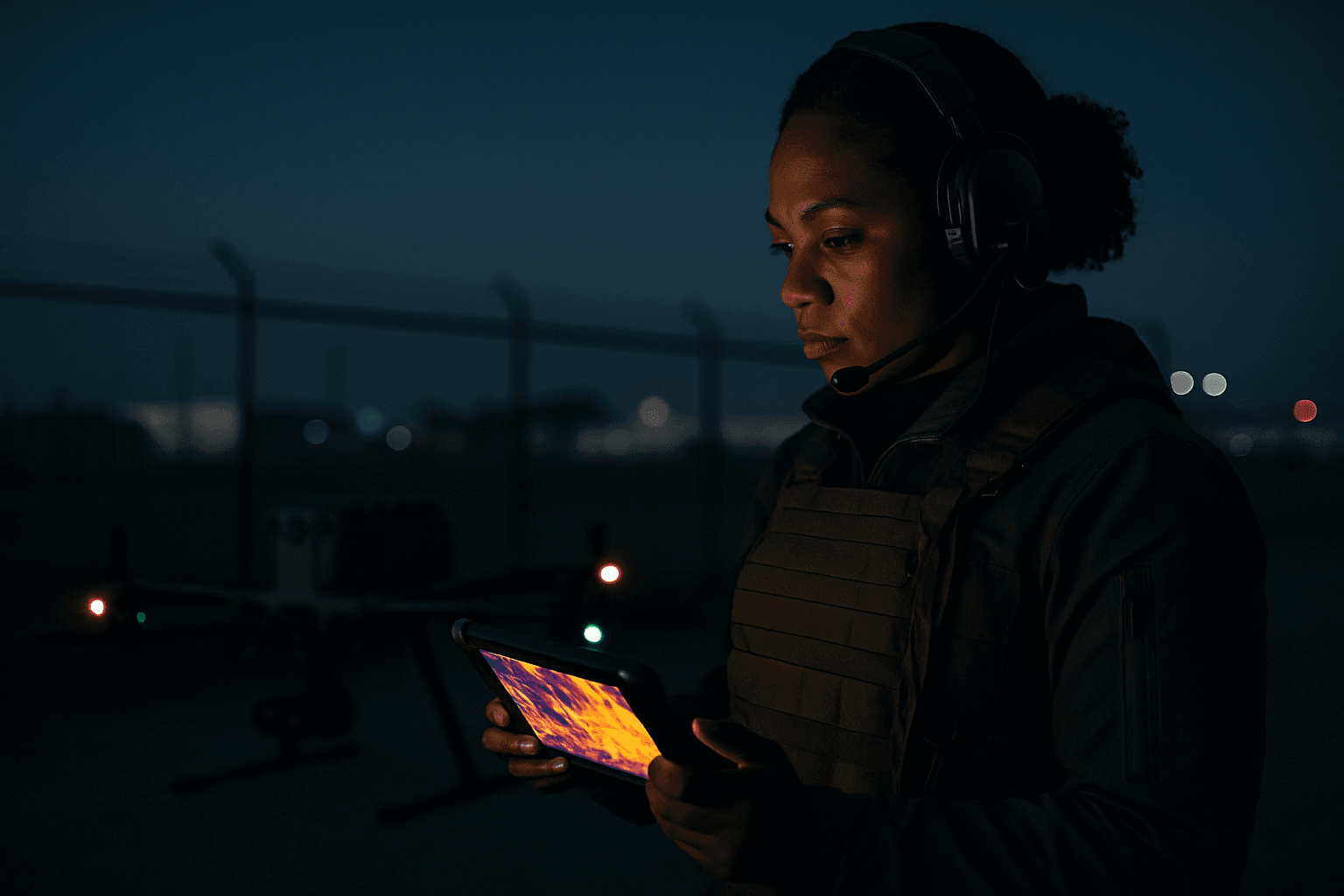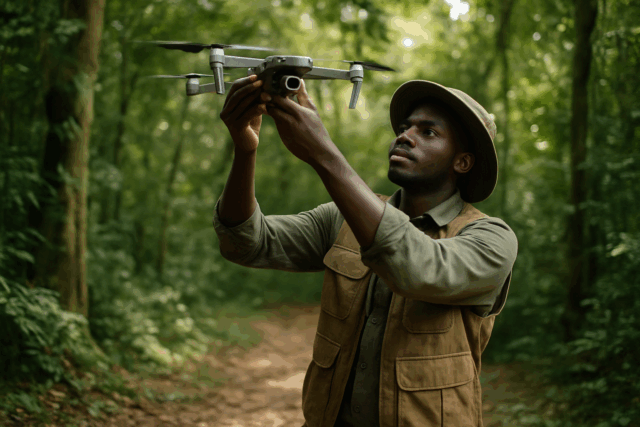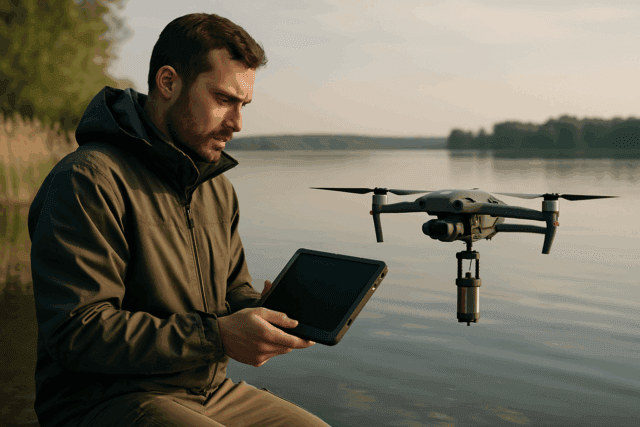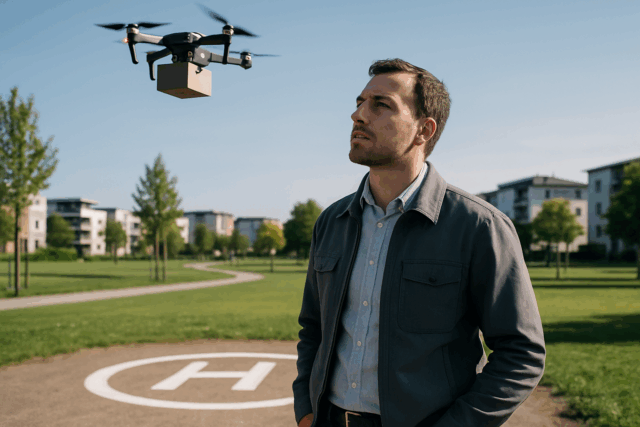Imagine securing vast perimeters, monitoring remote facilities, or conducting critical surveillance operations when darkness falls. Traditional security methods often falter in low-light conditions, leaving blind spots and vulnerabilities. However, the advent of thermal imaging drones is transforming night security, offering an unparalleled “eye in the sky” that can pierce through the veil of night, smoke, and even dense foliage to detect hidden threats and enhance situational awareness.
Understanding Thermal Imaging Drones
Thermal imaging drones are Unmanned Aerial Vehicles (UAVs) equipped with specialized infrared cameras. Unlike conventional cameras that rely on visible light, thermal cameras detect the infrared radiation (heat) emitted by objects. Every object with a temperature above absolute zero emits some level of infrared radiation, and the intensity of this radiation increases with temperature. These drones capture these heat signatures and convert them into visual representations, typically displaying warmer objects in contrasting colors (e.g., red) against cooler backgrounds (e.g., blue). This unique capability allows them to “see” in complete darkness, fog, or smoke, where standard cameras would be ineffective.
At the core of a thermal drone camera is the thermal sensor, often a microbolometer, which detects infrared radiation and converts it into electronic signals. These signals are then processed by an image processor to create a detailed thermal image, often utilizing various color palettes like white hot, black hot, rainbow, or ironbow to highlight temperature differences.
Why Thermal Drones Excel in Night Security
Thermal imaging drones offer significant advantages over traditional security measures, especially during nighttime operations:
Overcoming Darkness and Obscurants
The primary benefit is their ability to operate in absolute darkness, without needing any ambient light. They can also effectively see through environmental obscurants such as fog, smoke, and even some types of dense foliage, which would completely obscure visibility for standard cameras. This allows security teams to maintain continuous vigilance 24 hours a day.
Enhanced Detection Capabilities
Thermal drones can spot heat signatures from individuals, vehicles, or animals that are hidden in shadows, camouflaged, or concealed in vegetation, making them incredibly effective at identifying potential intruders. This capability is crucial for identifying unauthorized activities or individuals entering restricted zones.
Increased Coverage and Efficiency
Drones can cover vast areas quickly and efficiently, far surpassing the speed and range of ground patrols. A single thermal drone can patrol large perimeters in minutes, providing real-time aerial oversight that eliminates blind spots. This allows for more dynamic patrols and continuous perimeter monitoring.
Reduced Risk to Security Personnel
By deploying drones for initial reconnaissance or to investigate suspicious activities, security personnel can maintain a safe distance, reducing their exposure to potentially dangerous situations. In scenarios like suspect apprehension or disaster outbreaks, drones can assess the situation before human entry.
Real-time Monitoring and Data Analysis
Many thermal drone systems enable live streaming of thermal video feeds to multiple viewers, improving coordinated security efforts and allowing for immediate threat assessment. This real-time data is invaluable for making informed decisions and responding quickly to incidents. Automated patrols can also follow predefined routes autonomously, further enhancing efficiency.
Key Applications in Night Security Patrols
The versatile capabilities of thermal imaging drones make them indispensable for a wide range of night security applications:
Perimeter and Border Security
Thermal drones are vital for monitoring borders and sensitive installations, detecting unauthorized crossings or suspicious heat signatures over extended periods. Their ability to cover vast stretches of terrain, including dense forests or mountainous areas, makes them superior to fixed cameras for tracking irregular activities.
Intruder Detection and Tracking
For large properties like industrial facilities, warehouses, or farms, thermal drones can effectively identify and track trespassers. They can detect body heat from individuals attempting to breach security, even in complete darkness, and track their movements in real time, enabling immediate action or alerting authorities.
Law Enforcement and Tactical Operations
Police forces and law enforcement agencies increasingly use thermal drones for night operations such, as suspect searches, tactical support, and even evidence retrieval. They provide an aerial perspective that enhances officer safety and allows for the detection of individuals and evidence in poor visibility conditions without the need for additional lighting.
Search and Rescue (SAR)
In critical, time-sensitive search and rescue missions, particularly at night or in challenging terrains (mountains, forests, disaster zones), thermal drones are life-saving tools. They can quickly locate missing persons by detecting body heat, even through dense foliage or in smoke-filled environments, significantly expediting rescue efforts.
Industrial Facilities and Critical Infrastructure
Thermal drones are crucial for securing vast industrial sites. They can patrol large perimeters, identify coverage gaps, and detect potential equipment malfunctions by identifying overheating components, preventing costly downtime and enhancing safety.
Early Fire Detection
An often-overlooked but critical application is early fire detection. Thermal drones can survey large areas to swiftly identify abnormal heat sources that may indicate a fire outbreak, allowing for proactive response before a small hot spot escalates into a major inferno.
Technological Features and Considerations for Deployment
When considering thermal imaging drones for night security, several technological features and operational considerations are important:
- Flight Time and Endurance: Longer flight times ensure a persistent aerial presence, crucial for continuous surveillance. Tethered drones, for example, can operate for extended periods without battery changes.
- Image Resolution and Quality: Higher-resolution thermal cameras provide more detailed and precise heat mapping, enabling the detection of even subtle temperature variations with greater accuracy.
- Low Noise Footprint: For stealth and to avoid alerting potential intruders, a low noise footprint is imperative for security drones.
- AI Integration: The integration of artificial intelligence (AI) and machine learning (ML) algorithms with thermal imaging can significantly enhance detection capabilities by automating the identification and classification of objects and humans, providing real-time analysis.
- Payload Options: Drones can be equipped with hybrid thermal payloads that combine conventional imaging systems with infrared cameras, offering dual-camera capabilities for comprehensive monitoring.
- Remote Control and Cloud Integration: Advanced systems allow operators to control drones remotely, adjust camera angles, and track targets in real-time, with cloud-based systems enabling live streaming to multiple viewers for coordinated efforts.
Challenges and Future Outlook
Despite their transformative potential, thermal imaging drones for night security face certain challenges. The initial investment in drone technology can be significant. Battery life and limited flight time remain a consideration for prolonged missions, though this is continuously improving. Regulatory compliance and privacy concerns are also important ethical and legal considerations, as drones collect data that can raise questions about individual privacy. Environmental factors such as atmospheric conditions or reflective surfaces like glass can also affect thermal camera accuracy. Furthermore, current thermal imaging techniques may have limitations in distinguishing very small or densely arranged targets, and may exhibit reduced texture and contrast compared to visible light images.
However, the future of thermal imaging drones in security looks promising. Advancements are expected in improved battery life, longer flight times, and enhanced image resolution. Further integration of AI will lead to more sophisticated and autonomous drones capable of identifying and responding to specific thermal patterns or anomalies. Sensor fusion, combining thermal imaging with other technologies like LiDAR (Light Detection and Ranging), will provide an even more comprehensive understanding of environments. As these technologies continue to evolve, thermal imaging drones are poised to become an even more indispensable tool, revolutionizing night security patrols and bolstering safety across a myriad of sectors.





